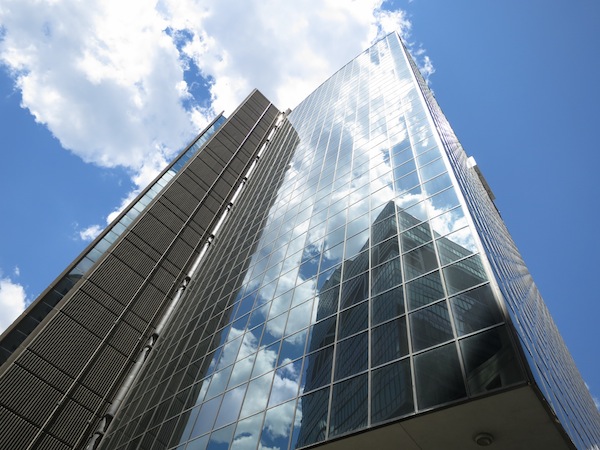Through the 2012 Owner Study, consultant FMI and the Construction Users Roundtable set out to understand how large capital program owners are coping with the current environment, as well as what challenges they believe the future environment holds and how prepared they feel to face these challenges. In general, survey and interview questions fell into these broad areas:
-
Identification of future issues impacting capital programs and the degree of preparedness toward addressing those issues.?
-
Level of staffing changes during the past four years and anticipated staffing trends going forward.
- Degree of project disruptions affecting capital programs resulting from delays, cancellations and funding challenges.
- Continued evolution of project delivery systems and procurement methods.
Based on survey responses, it is clear that many capital program owners have already begun the process of identifying future challenges and mitigating the impact of those issues on their capital programs. Other owners, however, anticipate many of these challenges to have a significant effect on their capital programs and are not confident in their responses to date. The ability of these owners to maintain the objectives of their capital programs in the face of these challenges will depend on the actions they take to identify and address these issues. How capital program owners respond to both the current and future environment will significantly influence their ability to plan, design, procure and manage capital projects effectively. As their ability to engage in these activities changes, so too will the expectations of owners for their planning, design and construction partners.
Survey responses reflect the fact that economic recovery has yet to begin for many, especially in the engineering and construction industry. At its peak in 2006, the construction industry represented more than $1 trillion of economic activity, roughly 9% of nominal GDP. The industry has contracted every year since then. The burst of the housing bubble, the credit crisis and the ensuing recession reduced the industry to roughly 70% of its 2006 size in 2012, and to only 5% of nominal GDP. The dark cloud, however, is clearing. according to FMI forecasts, construction put-in-place voluimes in 2012 are expected to end the year 5% higher than in 2011.
For a free download: http://www.fminet.com/fmi-curt-survey-of-owners-2012.html
Related Stories
M/E/P Systems | Jan 27, 2022
Top 5 building HVAC system problems and how to fix them
When your HVAC system was new, it was designed to keep the indoor environment comfortable, functional, and safe. Over time, that system can drift out of alignment, leading to wasted resources, excessive energy consumption, and reduced occupant comfort.
Sponsored | Steel Buildings | Jan 25, 2022
Structural Game Changer: Winning solution for curved-wall gymnasium design
Sponsored | Steel Buildings | Jan 25, 2022
Multifamily + Hospitality: Benefits of building in long-span composite floor systems
Long-span composite floor systems provide unique advantages in the construction of multi-family and hospitality facilities. This introductory course explains what composite deck is, how it works, what typical composite deck profiles look like and provides guidelines for using composite floor systems. This is a nano unit course.
Urban Planning | Jan 25, 2022
Retooling innovation districts for medium-sized cities
This type of development isn’t just about innovation or lab space; and it’s not just universities or research institutions that are driving this change.
Sponsored | Resiliency | Jan 24, 2022
Norshield Products Fortify Critical NYC Infrastructure
New York City has two very large buildings dedicated to answering the 911 calls of its five boroughs. With more than 11 million emergency calls annually, it makes perfect sense. The second of these buildings, the Public Safety Answering Center II (PSAC II) is located on a nine-acre parcel of land in the Bronx. It’s an imposing 450,000 square-foot structure—a 240-foot-wide by 240-foot-tall cube. The gleaming aluminum cube risesthe equivalent of 24 stories from behind a grassy berm, projecting the unlikely impression that it might actually be floating. Like most visually striking structures, the building has drawn as much scorn as it has admiration.
Sponsored | Resiliency | Jan 24, 2022
Blast Hazard Mitigation: Building Openings for Greater Safety and Security
Coronavirus | Jan 20, 2022
Advances and challenges in improving indoor air quality in commercial buildings
Michael Dreidger, CEO of IAQ tech startup Airsset speaks with BD+C's John Caulfield about how building owners and property managers can improve their buildings' air quality.
Building Owners | Jan 17, 2022
Success from within: Three characteristics of effective owner project planning
Setting realistic expectations for project teams can help owners avoid common pitfalls.
Sponsored | BD+C University Course | Jan 12, 2022
Total steel project performance
This instructor-led video course discusses actual project scenarios where collaborative steel joist and deck design have reduced total-project costs. In an era when incomplete structural drawings are a growing concern for our industry, the course reveals hidden costs and risks that can be avoided.
University Buildings | Jan 11, 2022
Designing for health sciences education: supporting student well-being
While student and faculty health and well-being should be a top priority in all spaces within educational facilities, this article will highlight some key considerations.

















